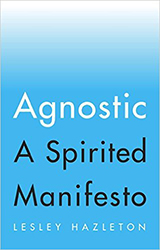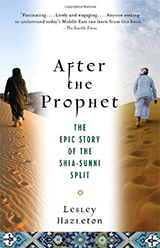Looks like the accidental theologist is on her way to becoming the accidental ontologist. Story of what I’ve been up to this past year or two to come, but meanwhile, here’s a hint of where I’m going, just published in The Stranger (yes, The Stranger!) with this great illustration:

(Note to self: got to get a pair of glasses like those.)







 “The humiliation machine,” Ben Ehrenreich calls it in his new book,
“The humiliation machine,” Ben Ehrenreich calls it in his new book,  I went fast — whoopin’ and hollerin’, freed of all responsibility by the knowledge that none of this was real. And yet I couldn’t help acting as though it was. So much so that when I realized I was about to crash into a mountainside, I braked as hard as I could, and tried to dismount.
I went fast — whoopin’ and hollerin’, freed of all responsibility by the knowledge that none of this was real. And yet I couldn’t help acting as though it was. So much so that when I realized I was about to crash into a mountainside, I braked as hard as I could, and tried to dismount. “This is creepy,” I said as I generously offered myself up as a test subject for their “hover-chair” (move your body around in it, and you find yourself moving around a dilapidated old house). “Looks like it could use a couple of chainsaws on the wall.”
“This is creepy,” I said as I generously offered myself up as a test subject for their “hover-chair” (move your body around in it, and you find yourself moving around a dilapidated old house). “Looks like it could use a couple of chainsaws on the wall.” Here’s a book I’m looking forward to reading. I think. It’s a book I know will excite me, infuriate me, challenge me, provoke me, and have me scrawling an enthusiastic ‘yes!’ or a bad-tempered ‘no!’ in the margins of practically every page. And very often both on the same page.
Here’s a book I’m looking forward to reading. I think. It’s a book I know will excite me, infuriate me, challenge me, provoke me, and have me scrawling an enthusiastic ‘yes!’ or a bad-tempered ‘no!’ in the margins of practically every page. And very often both on the same page. Now, pollsters believe in categories – that’s their religion – which is why they so often design their surveys in order to force the issue, leaving respondents no option but to lean this way or to lean that way. There’s rarely any room to stand up straight in pollster-land.
Now, pollsters believe in categories – that’s their religion – which is why they so often design their surveys in order to force the issue, leaving respondents no option but to lean this way or to lean that way. There’s rarely any room to stand up straight in pollster-land. Like Sherlock, they notice, investigate, probe, take nothing for granted. They’re intellectually engaged observers, and if they are to observe well, a certain detachment is required, as it is with psychotherapists. Yet many people seem to think that the study of religion leaves little room for detachment. Thus the insistence that there has to be a personal search on my part. Without that, it seems, what excites me or moves me to action or simply gets me out of bed in the morning — what makes me not merely accepting of life, but eager to live it — is somehow lacking a ‘higher’ dimension.
Like Sherlock, they notice, investigate, probe, take nothing for granted. They’re intellectually engaged observers, and if they are to observe well, a certain detachment is required, as it is with psychotherapists. Yet many people seem to think that the study of religion leaves little room for detachment. Thus the insistence that there has to be a personal search on my part. Without that, it seems, what excites me or moves me to action or simply gets me out of bed in the morning — what makes me not merely accepting of life, but eager to live it — is somehow lacking a ‘higher’ dimension. Yet the idea of humans as being “hard-wired” persists. A headline in
Yet the idea of humans as being “hard-wired” persists. A headline in